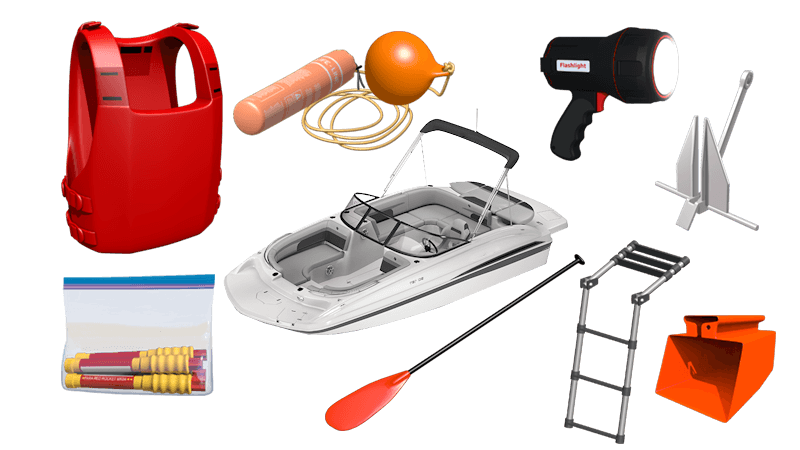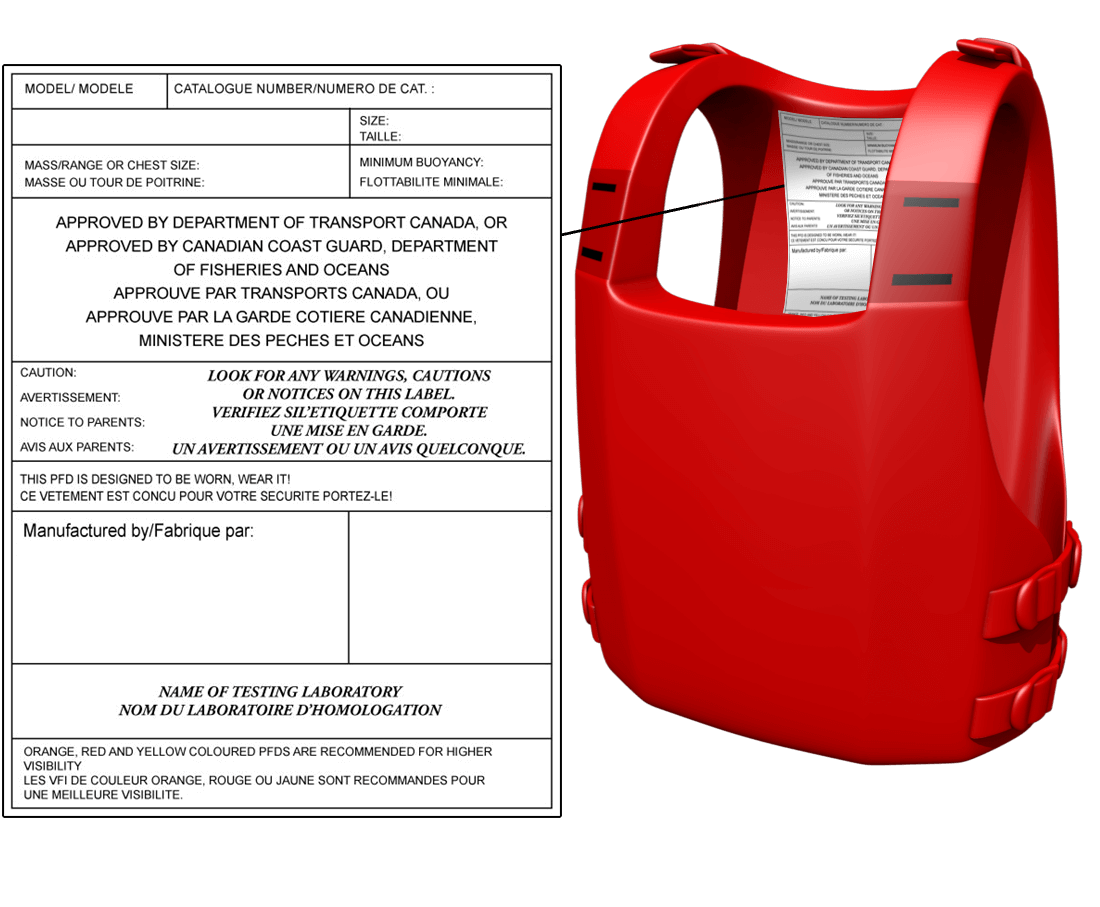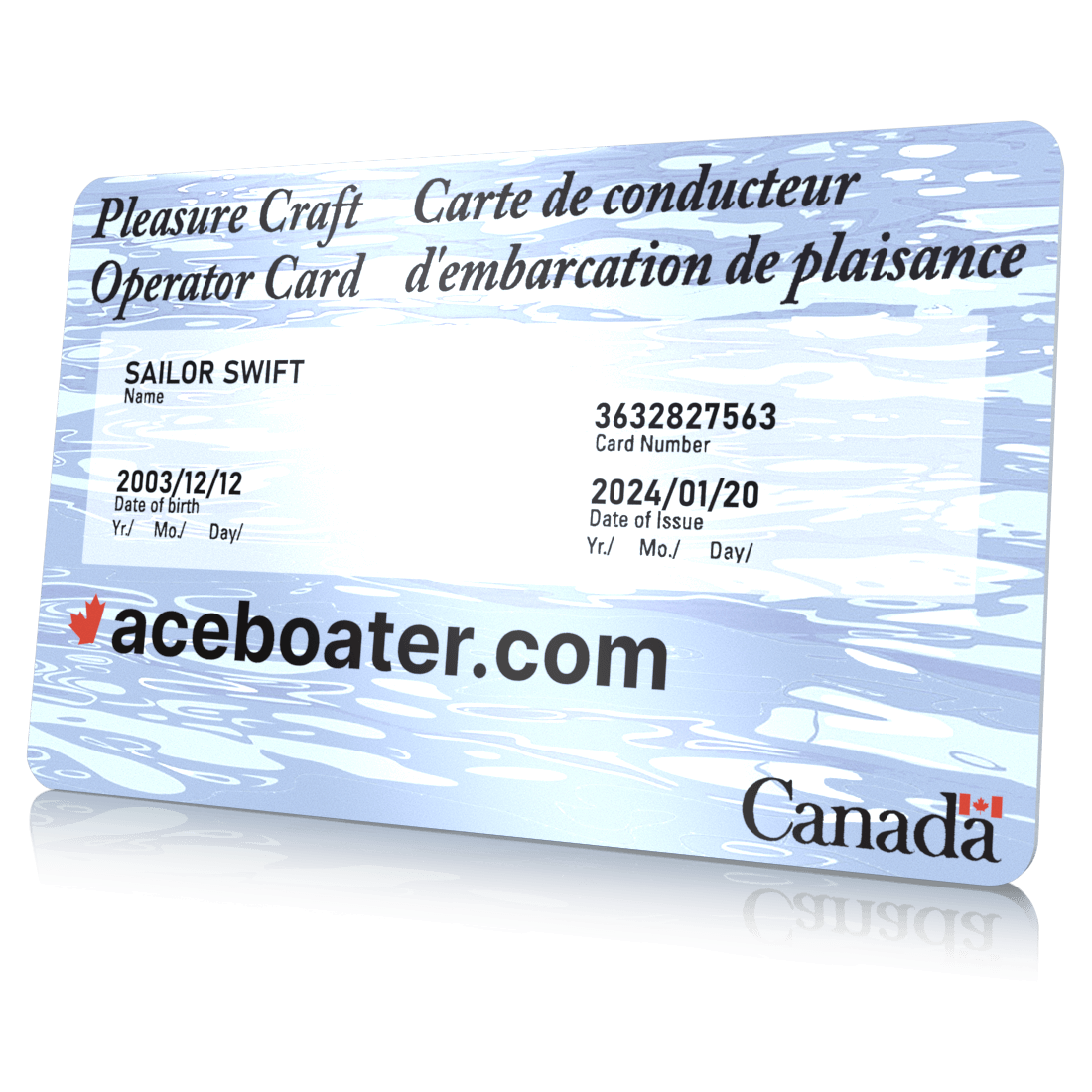Canadian Boat Safety Equipment List Boat Safety Kit
Whether you’re using your boat for fishing, wakesurfing, skiing, diving, day cruising or overnighting, remember to pack essential safety gear
What determines the minimum safety equipment requirements for a pleasure craft?
The specific safety equipment needed will depend on the type and size of your boat.

Life jackets or PFDs (Personal Floatation Devices)
What are PFDs? PFD means Personal Flotation Device. PFDs are available in a wide range of approved types, sizes and colours.
While PFDs are more comfortable than lifejackets because they are designed for constant wear, they do not generally offer the same level of protection as lifejackets. You must have at least one approved PFD for each person onboard.
Canadian boating license
You need education if you will be operating a pleasure craft that has a motor and is used for recreational purposes in Canada. Canadian boating license
Buoyant heaving line
A buoyant heaving line is used to be thrown toward a person in distress in the water. To improve the accuracy of the throw overboard to a person overboard, a balloon or other floating object should be fixed to the buoyant heavy line. In addition, boaters should practice throwing the buoyant heaving line in order to develop their ability to be effective if an emergency occurs.
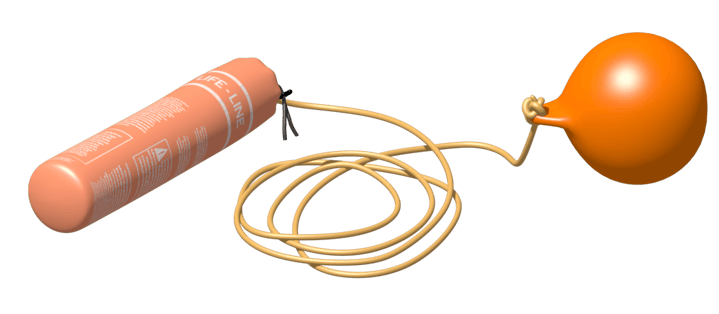
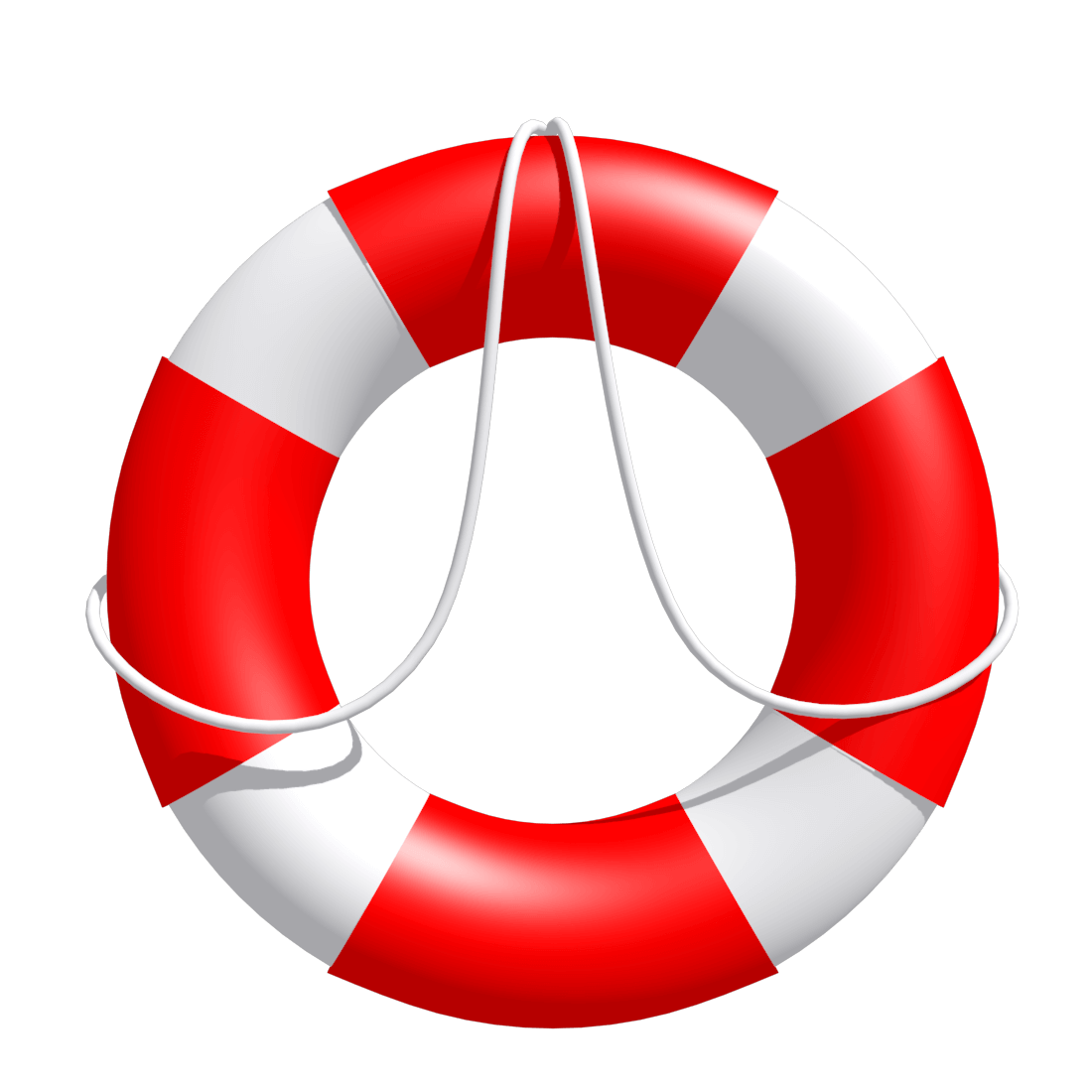
Approved lifebuoy
When buying a lifebuoy, look for a Transport Canada approval stamp or label. Lifebuoys must be at least 610 mm (24”) in diameter. SOLAS lifebuoys are 762 mm (30”) in diameter. Smaller lifebuoys and horseshoe-type devices are not approved. The lifebuoy must be attached to a buoyant line of not less than 15 m in length which must be securely fixed, and in good condition. Make sure that the grab lines on the lifebuoy are also secure and in good condition. Also, it must not show any tearing, perforation, or mold. It must be quickly accessible in an emergency and is required only on vessels over 9m.
Reboarding device
A reboarding device allows a person to get back onto the boat from the water. Being able to re-board your vessel is very important and even more so if you are the only one in the boat and have fallen overboard.
That is why a vessel that has a freeboard of greater than 0.5 metres is required by law to have a re-boarding device.

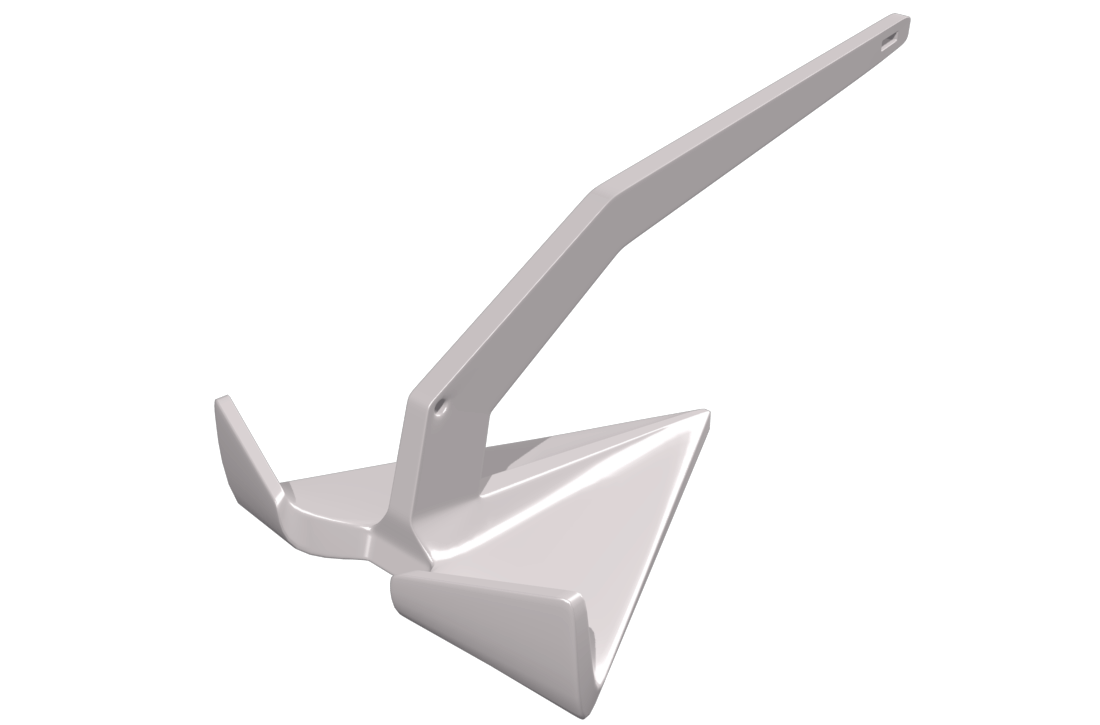
Anchor
Having the right anchor and cable for your boat is important. If you don’t, rough winds and water can cause it to drag, leaving your boat to drift. This is especially dangerous if you are asleep or swimming nearby. Make sure that your boat is well anchored and that the swivel is properly locked, and keep watch to detect signs of dragging. The first step in anchoring is to select the proper anchor. In spite of claims to the contrary, there is no single anchor design that is best in all conditions.
Marine VHF radio
ROC (Restricted Radiotelephone Operator's Certificate) is required by anyone using a marine VHF radio or other marine radios (each person on the boat who will use the radio needs their own card)
There are significant fines if you are found using a VHF or marine radio without your card.
Industry Canada has delegated the ROC(M) to the Canadian Power & Sail Squadrons (CPS).
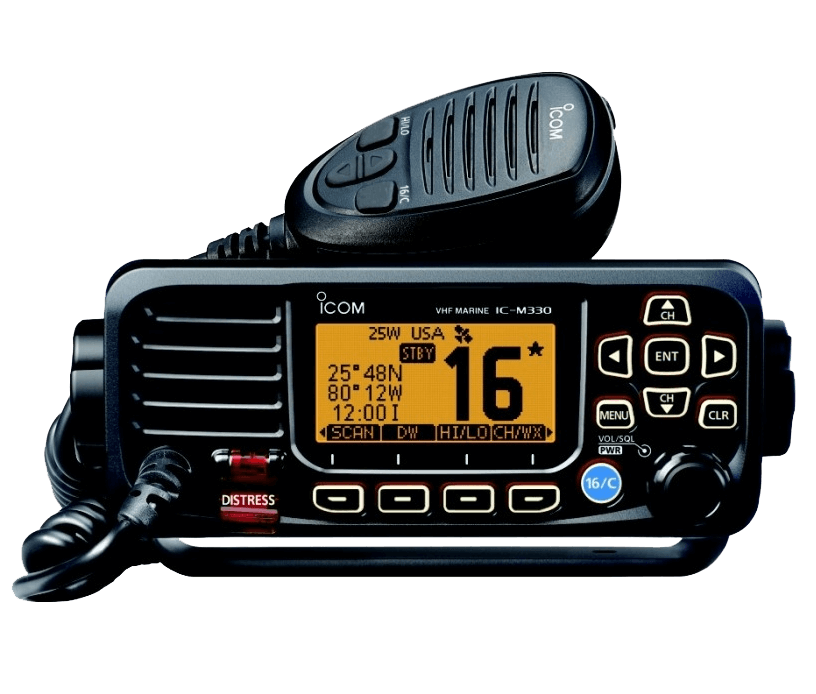
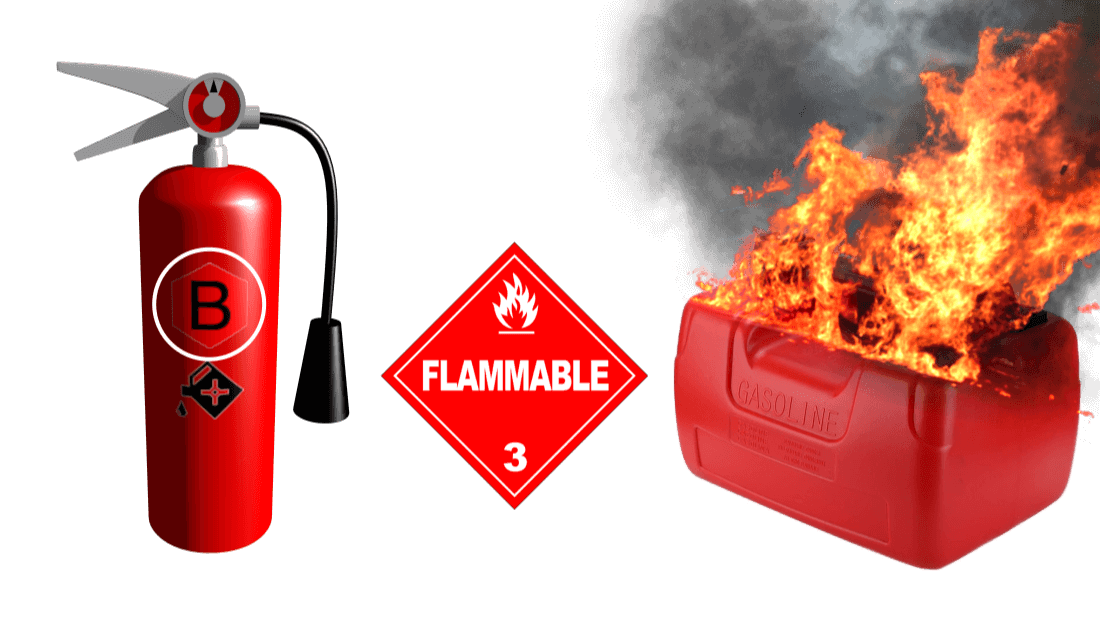
Fire extinguisher
Different types of fires can occur on a motorized boat, and each type of fire requires a different type of extinguisher. A motor boat should have a type BC fire extinguisher on board capable of fighting combustible liquid and electrical fires. The letters on a fire extinguisher determine what types of fires it is designed to fight. Fires are classified as follows:
Pyrotechnic distress signals - Flares
A distress flare is a pyrotechnic device that is used to signal for help in emergency situations.
Distress flares are commonly used by boaters and sailors who find themselves in distress or need immediate assistance.
Use flares only in an emergency.
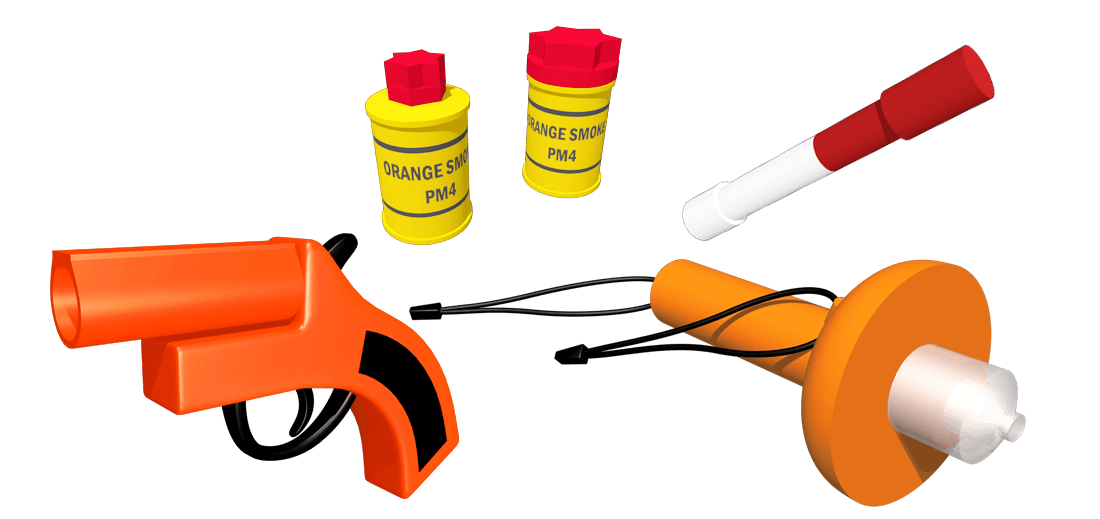

Radar reflector
Radar reflectors are required for boats under 20m (65’7”) and boats that are built of mostly non-metallic materials.
There are some exceptions where a radar reflector is not required.
-
If you are operating your vessel in limited traffic conditions, daylight hours and in favorable environmental conditions, a radar reflector is not needed because it isn’t essential to the boat’s safety.
-
The small size of your boat and/or its operation away from radar navigation and large shipping lanes might make having a radar reflector impracticable and, therefore, is not needed.
Magnetic compass
In Canada, every vessel except those under 9 m in length that stay within sight of navigation markers must be equipped with a standard magnetic compass that is independent of any power supply.
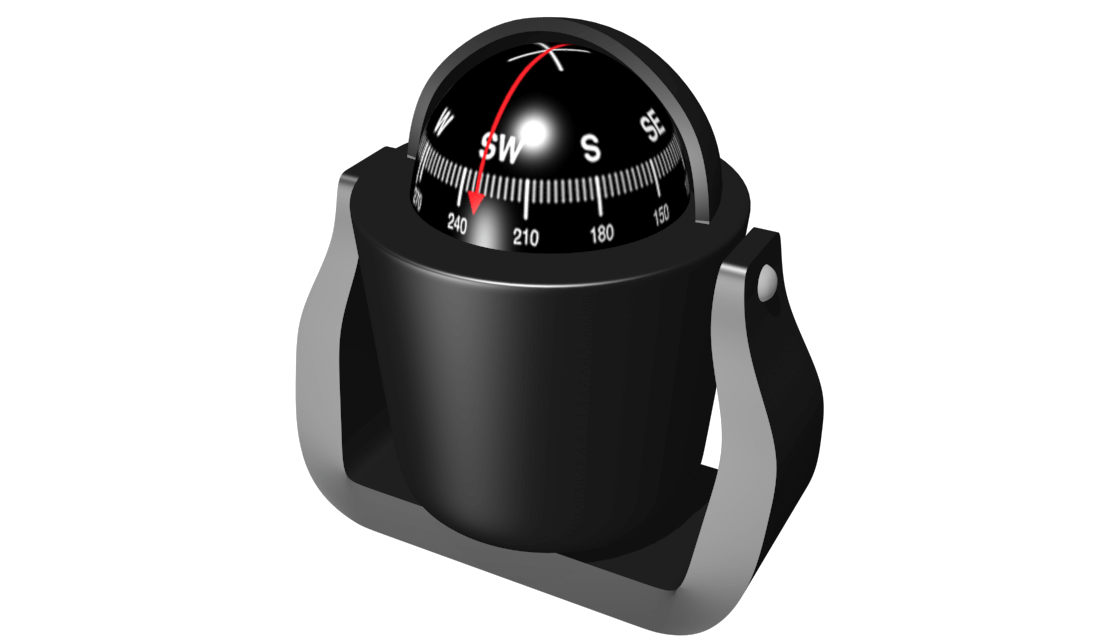

Sound signalling device
All boats are required to carry a sound signalling device or appliance to signal their position and intentions. Depending on the size of boat, different sound signalling devices or appliances may be required:
- Personal Watercraft (PWC)
- Sail and Power Boats up to 6 m (19'8")
- Sail and Power Boats over 6 m and up to 9 m (19'8''- 29'6'')
- Sail and Power Boats over 9 m and up to 12 m (29'6"- 39'4")
- Sail and Power boats over 12 m and up to 24 m (39'4"- 78'9")
- Sail and Power Boats over 24 m (78'9")
- Human-powered pleasure craft (canoes, kayaks, rowboats and rowing shells)
- Paddleboards, paddleboats, watercycles, sealed-hull and sit-on-top kayaks
- Sailboards and Kiteboards
Manual water pump, bilge pump and bailer
A manual bilge pump and bailer is required for all boats except sailboards and Paddle boats. Sailboards and Paddle boats are self-bailing sealed hull fitted with a recess-type cockpit that cannot contain a sufficient quantity of water to make the vessel capsize.


Watertight flashlight
If you lose power, a watertight flashlight may be your only way to signal for help. Watertight flashlights may also qualify as navigation lights on all non-powered vessels and sailboats less than 7m.
Make sure that the batteries in your watertight flashlight are fully charged before every trip.
Axe
In case of fire, you can use an axe to free up a stuck door on the boat. It can also be used to put out a fire between the layers of the hull, or to cut a mooring or towing cable during an emergency. Any type of axe is acceptable (including a small axe), but it is better to have an axe which also has a pointed end. It should be readily accessible and stored away from the elements.
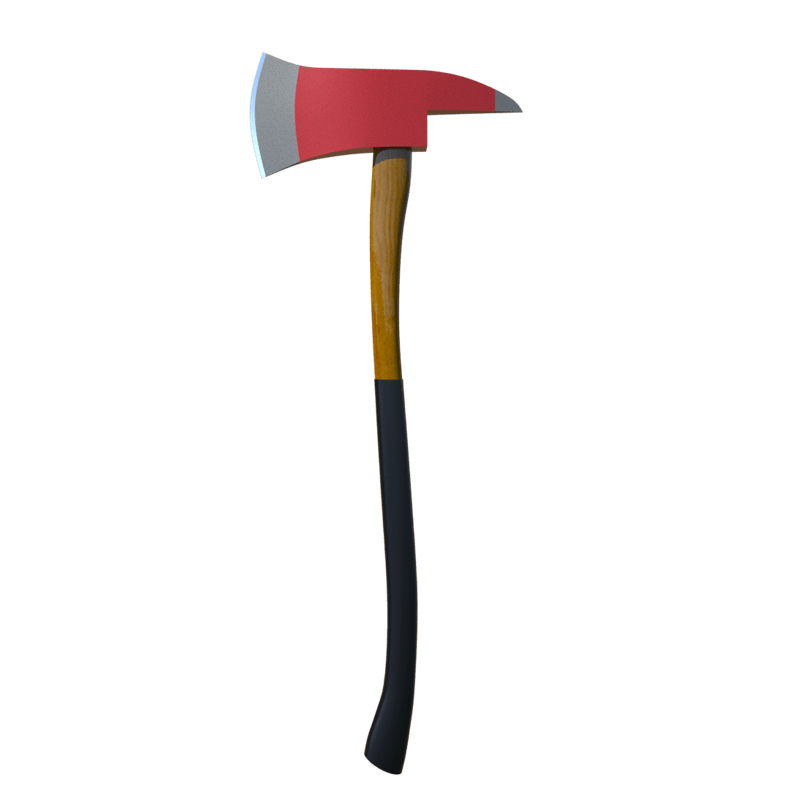
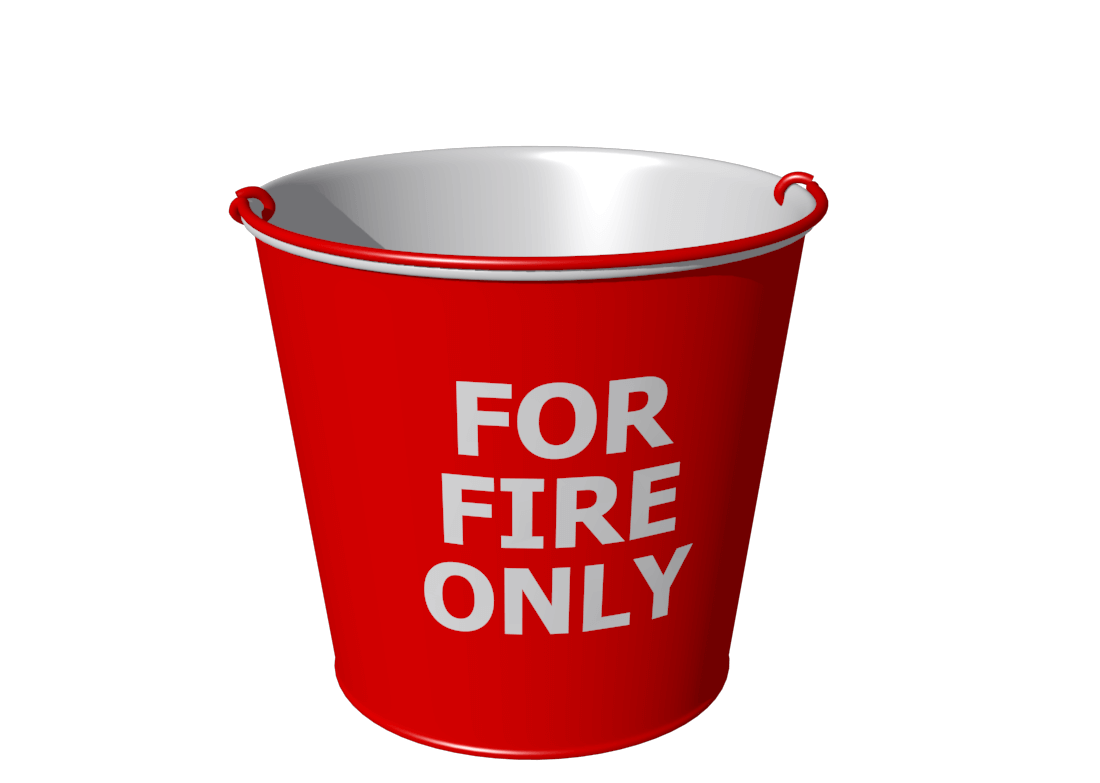
Fire bucket
The main purpose of the bucket is to put out type A fires. Type B extinguishers are required on boats that have an in-board engine (inside), but cannot put out type A fires which are solid combustible (wood, textiles). A bucket full of water will help to put out these fires. The only requirement is that the buckets have a capacity of at least 10 litres. The ones made of metal with a round bottom and a hole in the centre, painted in red, are not required on small vessels. However, it is recommended that the buckets are fitted with a lanyard of sufficient length to reach the water from the place where it is stored.
Navigation lights
Just like for vehicles on our roadways, there are rules that apply to the lights that must be displayed by boats.
These lights provide critical information to the operators of other vessels when they see you. Depending on the lights required to be displayed on your boat based on its length and type of propulsion, the information that these lights provide to others can tell them whether you are at anchor or underway or engaged in some other activity, whether you are a power-driven vessel or not, what your heading is, etc. Other vessels around you make collision avoidance decisions based on the information available to them, that's why it is so important that the information your navigation lights are giving them is the correct information.
If you are caught by the police not showing lights or showing improper lights, you will likely be fined. Worse yet, if the information your navigation lights are providing is incorrect and an accident occurs as a result of this, there could be serious repercussions.
Navigation lights must be displayed:
-
At night (between sunset and sunrise)
-
When periods of restricted (poor) visibility (fog or heavy rain)

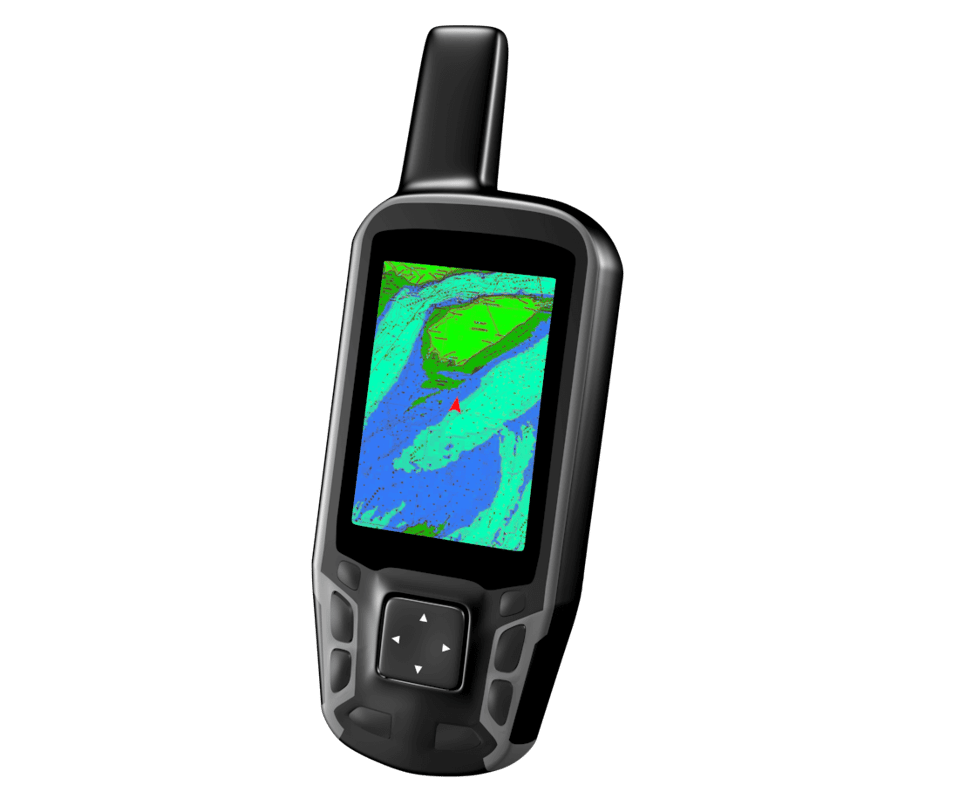
GPS or Global Positioning System
While more and more boat operators rely on marine GPS to tell them where they are on the water, it is a good idea to keep charts on board in case the GPS fails. With the aid of the nautical chart, whether integrated to the GPS or not, the boater can find his/her position on the map, and thus, on the body of water. If charts are integrated into the GPS, it is important to have backups available on paper in case of a GPS malfunction. It is highly recommended that you use fully charged batteries to allow peak performance of the GPS. Be careful to not drop it in the water, as most GPS’s are not waterproof.
Charts
Charts are graphic representations depicting areas of water, depicting the depths, underwater hazards, traffic routes, aids to navigation and adjacent coastal areas. These publications are intended to help boaters to better navigate. They are issued by the Canadian Hydrographic Service. They are used as navigational aids to help boaters with navigation. Boaters should always have on board an up-to-date nautical charts and related documents like a Tide and current tables.
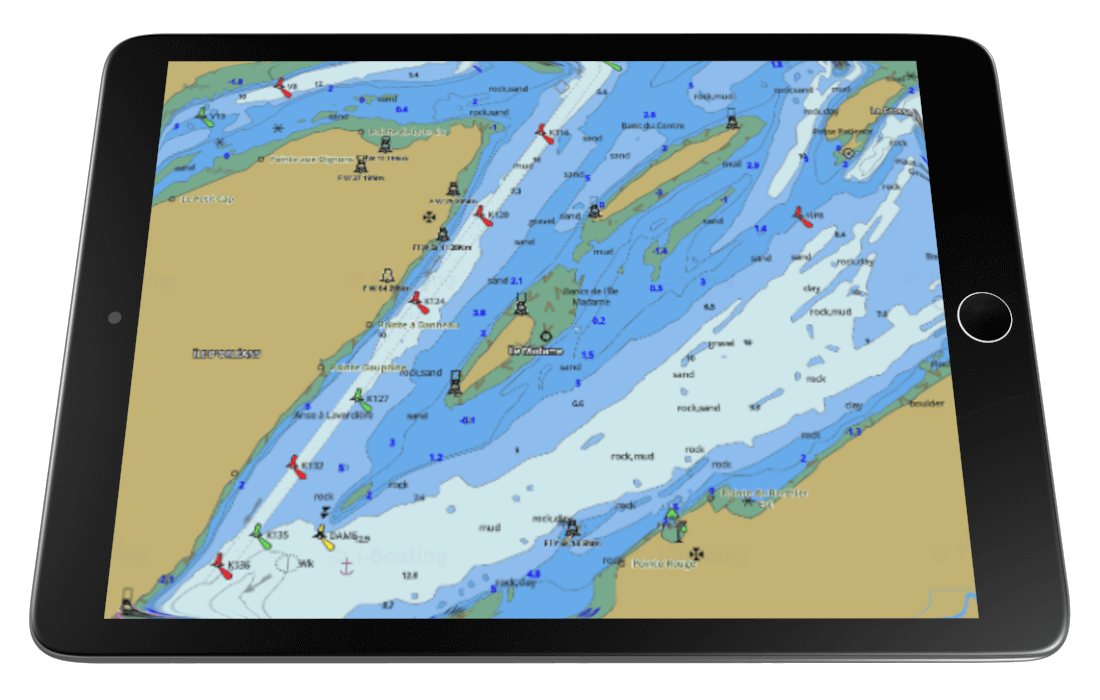
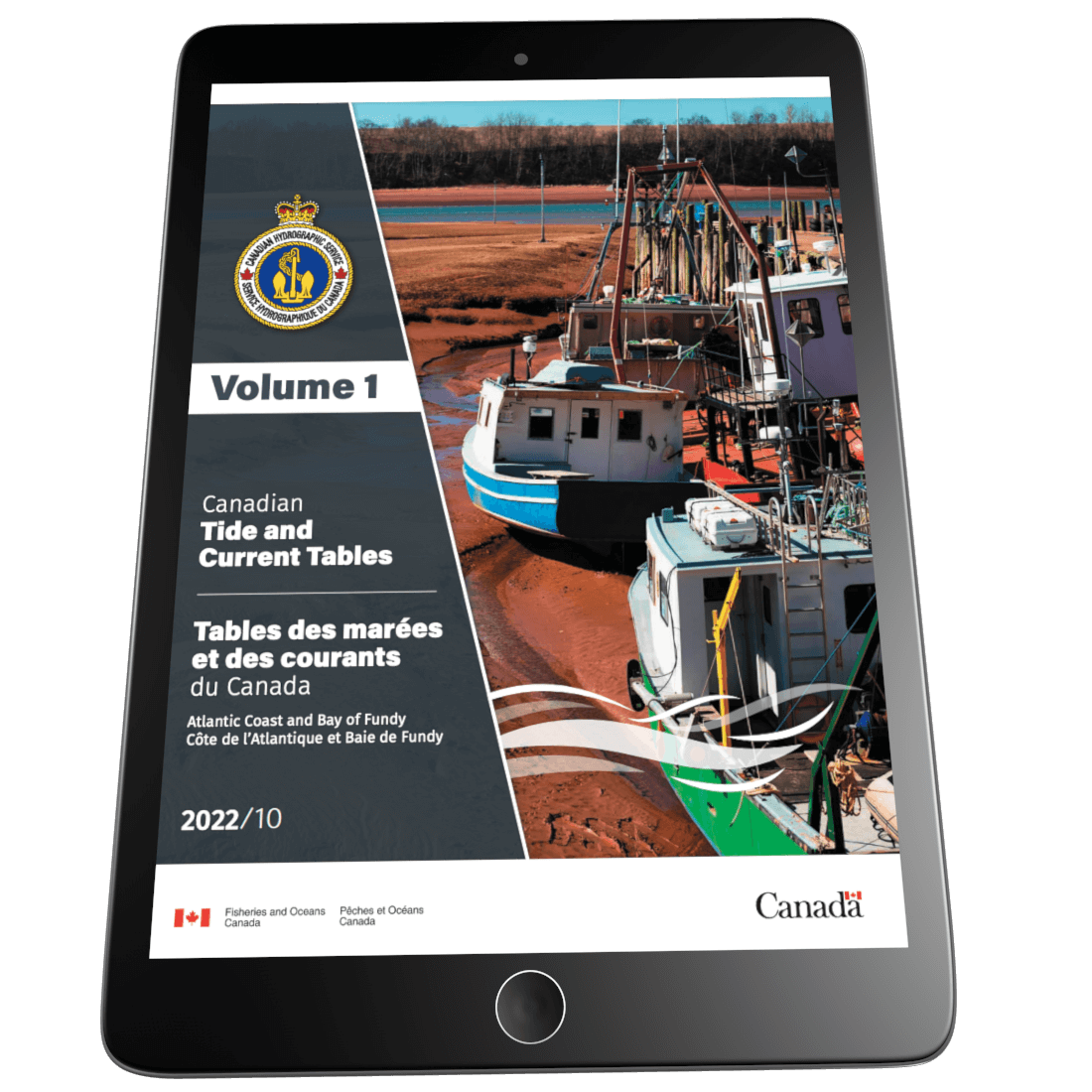
Tide tables
This document provides information about times of tides, direction of the water flow, heights of high and low waters, and the hourly water levels for over seven hundred stations in Canada.
It is also possible to obtain water level observations.
The Current Tables provide predicted times for slack water and the times and velocities of maximum current, all of which are associated with the horizontal movement of the tide.
Notices to mariners
A Notice to Mariners publication informs mariners of important navigational safety matters affecting Canadian Waters.
Notices to Mariners are continuous means employed by the Canadian Coast Guard (CCG), to promulgate information required by the master, pilot or person in charge of the navigation of a vessel, as well as other interested parties. The Notices to Mariners contain the necessary information to ensure that nautical charts, Sailing Directions, List of Lights, Annual Edition of Notices to Mariners and Radio Aids to Marine Navigation publications are kept up-to-date. Mariners are also informed of the enactment of regulations and the establishment of procedures governing vessel entry into and transit in Canadian waters.
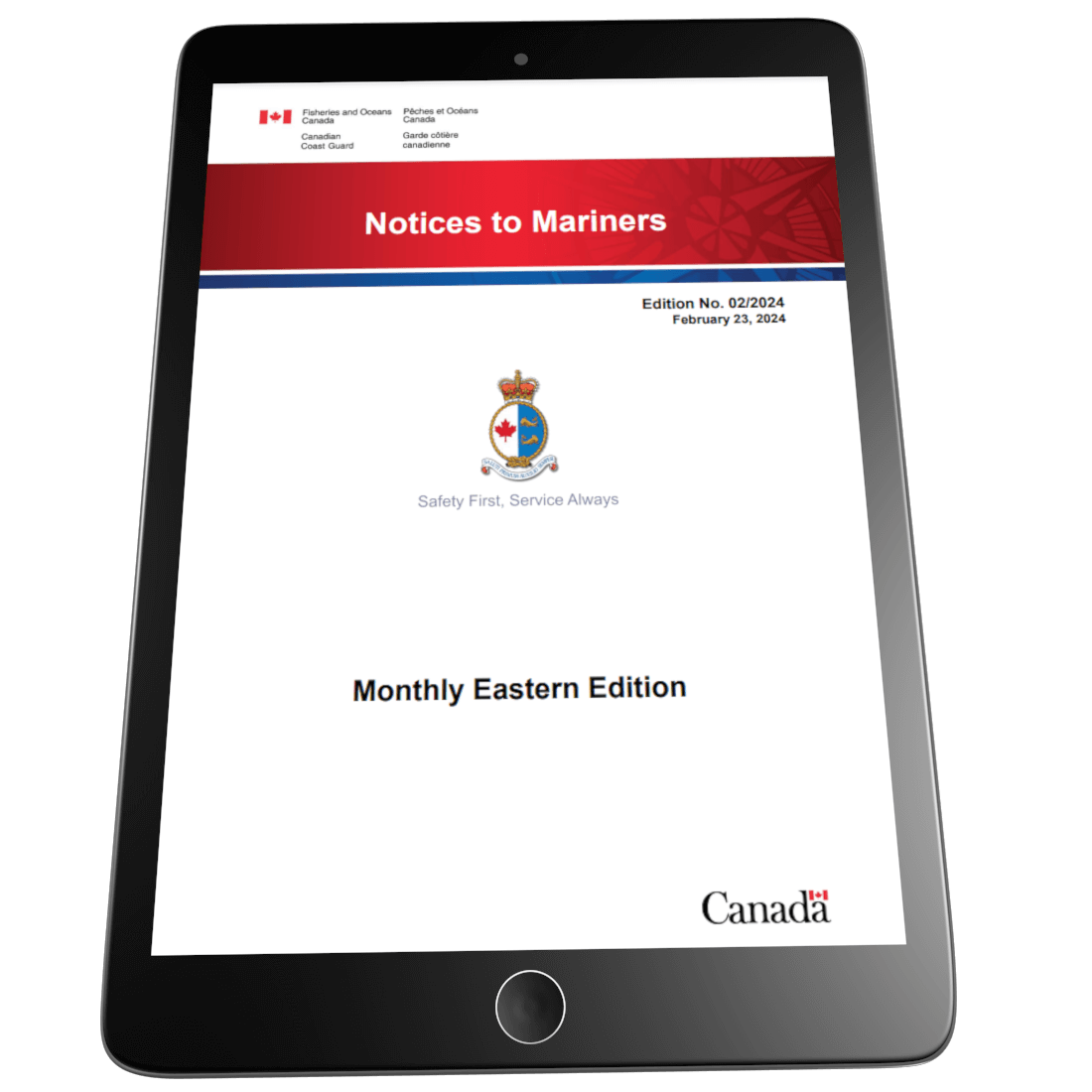

Fist Aid Safety Kit
What are the 15 items you need in a first aid box kit on a boat?
- A bottle of antiseptic solution
- First aid cream
- A variety of adhesive bandages
- Adhesive tape
- Disposable applicators
- Gauze pads
- Sterile dressing compresses
- Cold packs
- Eye pad with shield or tape
- A pair of scissors
- Elastic bandage
- Pocket-size emergency blanket
- Container of hand cleanser or packet of cleaning towelettes
- A splint with padding
- Burn dressings
Discover the essential of boat safety equipment that each type of boat must carry on board
-
Personal Watercraft (PWC)
-
Sail and Power Boats up to 6 m (19'8")
-
Canoes, kayaks, rowboats and rowing shells
-
Sail and Power Boats over 6 m and up to 9 m (19'8''- 29'6'')
-
Sail and Power Boats over 9 m and up to 12 m (29'6"- 39'4")
-
Sail and Power boats over 12 m and up to 24 m (39'4"- 78'9")
-
Sail and Power Boats over 24 m (78'9")
-
Paddleboards, paddleboats, watercycles, sealed-hull and sit-on-top kayaks
-
Sailboards and Kiteboards
Make sure you have the necessary safety equipment on board, always in excellent working condition, carefully maintained, and easily accessible in case of emergencies.
